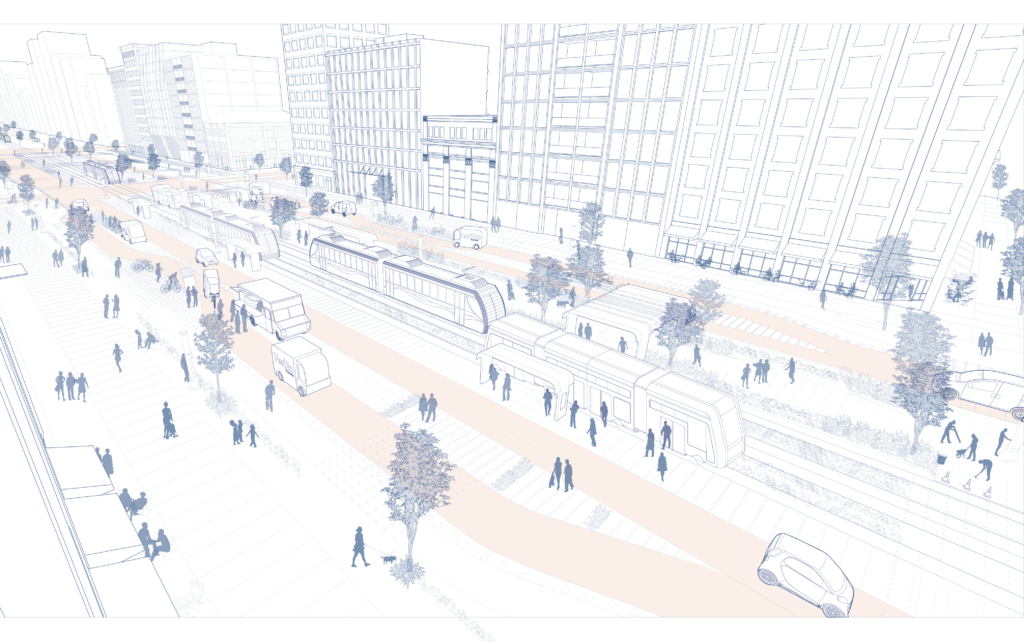The National Association of City Transportation Officials (NACTO) in North America has released the second edition of its Blueprint for Autonomous Urbanism. The document focuses on the near-term policies and decisions that are necessary for autonomous technologies to improve transportation outcomes, rather than lead to an overall increase in driving, greenhouse gas emissions, and diminished public space in cities.
Developed with a steering committee from NACTO’s 81 member cities and transit agencies, and based on the sweeping vision for city streets of the future in the first edition of the Blueprint, the second edition details the concrete steps that will need to be taken to ensure an equitable, people-first city.
“Automated vehicles have the potential to reshape and redefine how cities, including Toronto, plan transportation networks,” said Barbara Gray, general manager of transportation, City of Toronto. “Using these kinds of guidelines and ideas, our city and others can be AV ready and be better positioned to both lead and respond in a future with automated vehicles.”
The second edition of the Blueprint for Autonomous Urbanism also builds on the street designs envisioned in the first edition, outlining designs, policies and tools to enable safe, frequent crossings, more sustainable and efficient use of the street, and a more vibrant pedestrian realm. It also includes more detailed sections on the actions individual city departments – from IT to fleet services to parking authorities to employment and administrative services – should take to prepare as automated technology becomes more mature.
“City governments must work rapidly to change how street space is designed and allocated before yesterday’s values become enshrined in tomorrow’s concrete,” said Corinne Kisner, executive director of NACTO. “Taking proactive steps now means a future where people come first in an autonomous age. The Blueprint for Autonomous Urbanism outlines the policies for a thriving city: steps to improve our streets and cities now and with the technological advances to come.”


